Anyone who walks into Vaibhav Patel and Aastha Maheshwari Patel’s Vadodara home is certain they aren’t in the heart of Gujarat anymore, but instead, up north in the Kashmir Valley. The scent of saffron — spicy notes with hints of honey — is to blame. As you walk into the home, a dedicated space boasts a purple bloom of saffron flowers.
Watching this sight unfold in this apartment set-up is strange when one is accustomed to seeing it in the sprawling fields in the Pampore district of Kashmir — India’s only saffron-producing centre whose natural highlands and loamy soil are great hosts to the crop.
The district’s love affair with the spice started in the 5th century BC, and today, over 20,000 households are engaged in saffron farming here. Touted as ‘the new silver’ because of the lucrative prices it fetches in the global market, the spice is eyed by all — from smugglers to royals, often blurring geopolitical lines as it travels across the world.
Enjoyed in summer drinks and biryanis and set at the feet of gods in temples and gurudwaras, it suffices to say that saffron finds love in laymen and deities alike. Poems and songs of the 16th-century poet Habba Khatoon, known as the ‘Nightingale of Kashmir’, glorified the red threads of saffron.
Each culture, it seems, finds favour in its unique flavour. And now, a Vadodara couple has managed to decode the mystery of how to grow it at home.
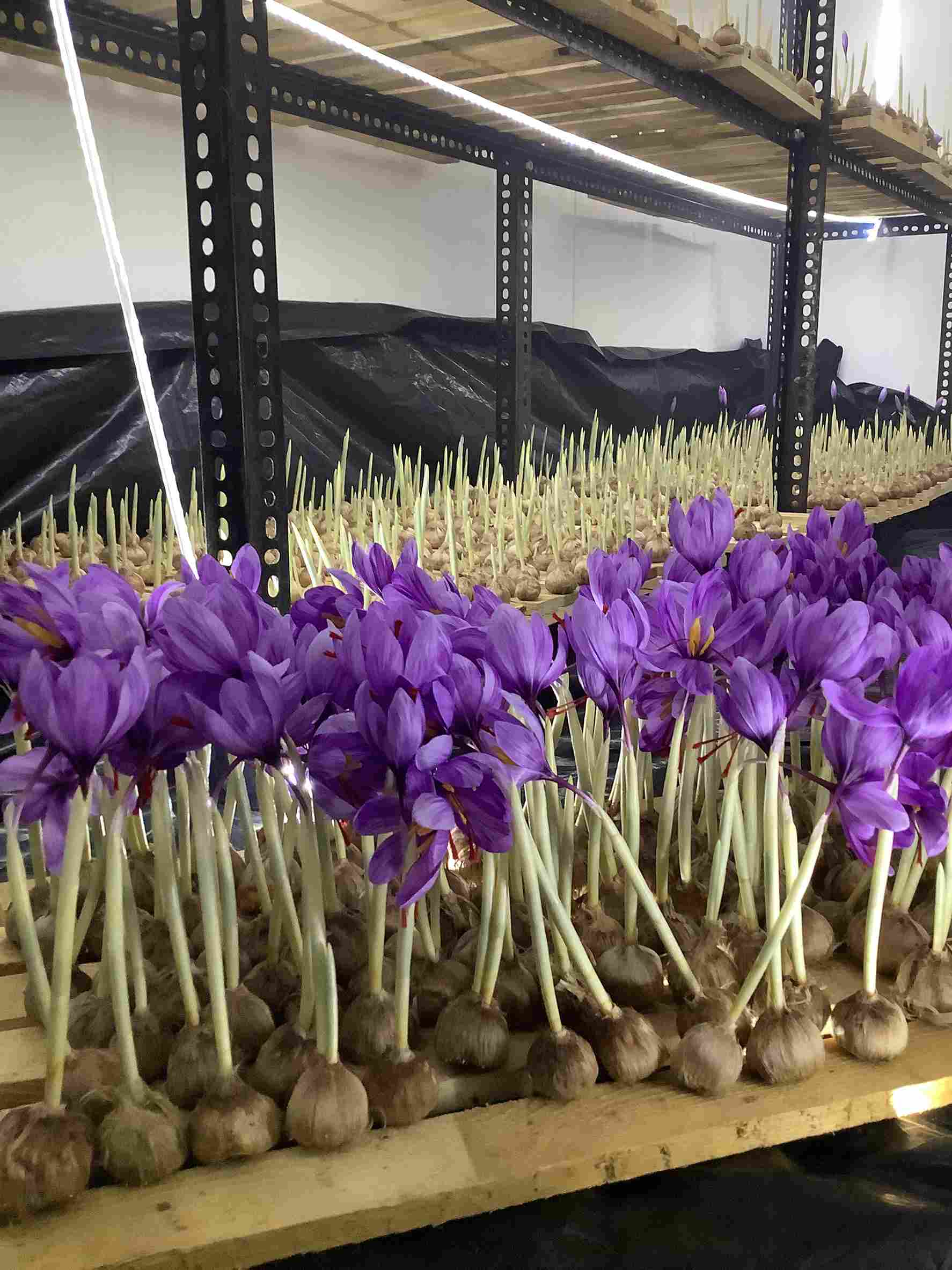
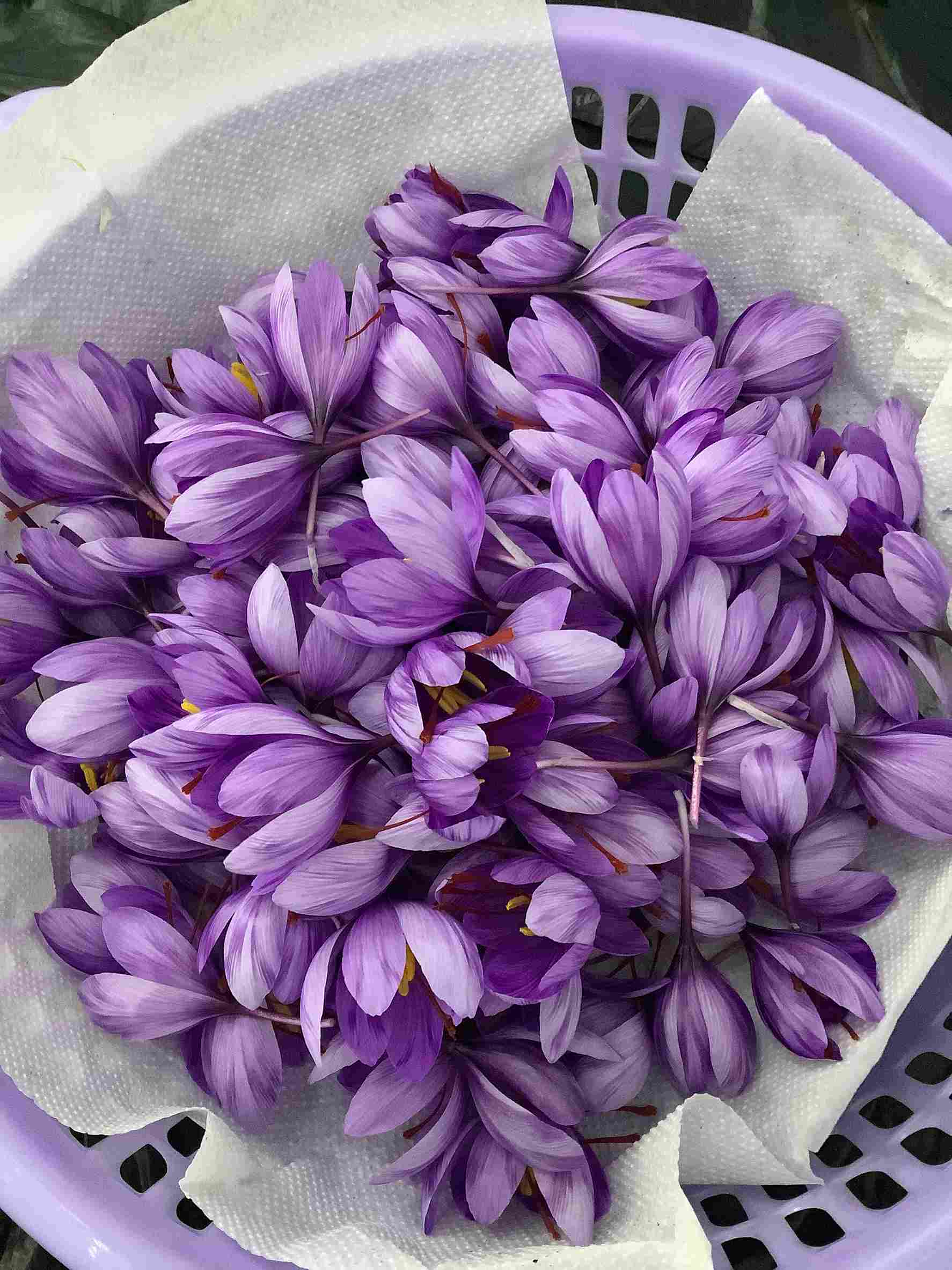
A saffron haven in Gujarat
A research specialist and a stock market professional respectively, Aastha and Vaibhav’s professional expertise is tangential to gardening. But the duo is all up for experimenting. “In 2022, we got interested in technological farming. It’s lucrative and caught our attention,” explains Vaibhav.
The early months of the year were fraught with learning about hydroponics, aquaponics and aeroponics. “That’s actually when we stumbled upon saffron and how it can be grown through aeroponics.”
The crop’s premium nature would make for good economics, the couple figured. Vaibhav’s exploits in the gardening domain went on for months before he believed he was ready to take the plunge. “Go big or go home” was the philosophy the couple adopted, as they recall their very first order, a bold decision to purchase 400 kg saffron seeds from Kashmir.
The magnitude of the task at hand dawned on Vaibhav the moment he saw the delivery at his doorstep. “My first thought was that if something goes wrong; it’s going to be a disaster.”
But months later as they had their very first harvest, they were all smiles. Here’s the journey to that point.
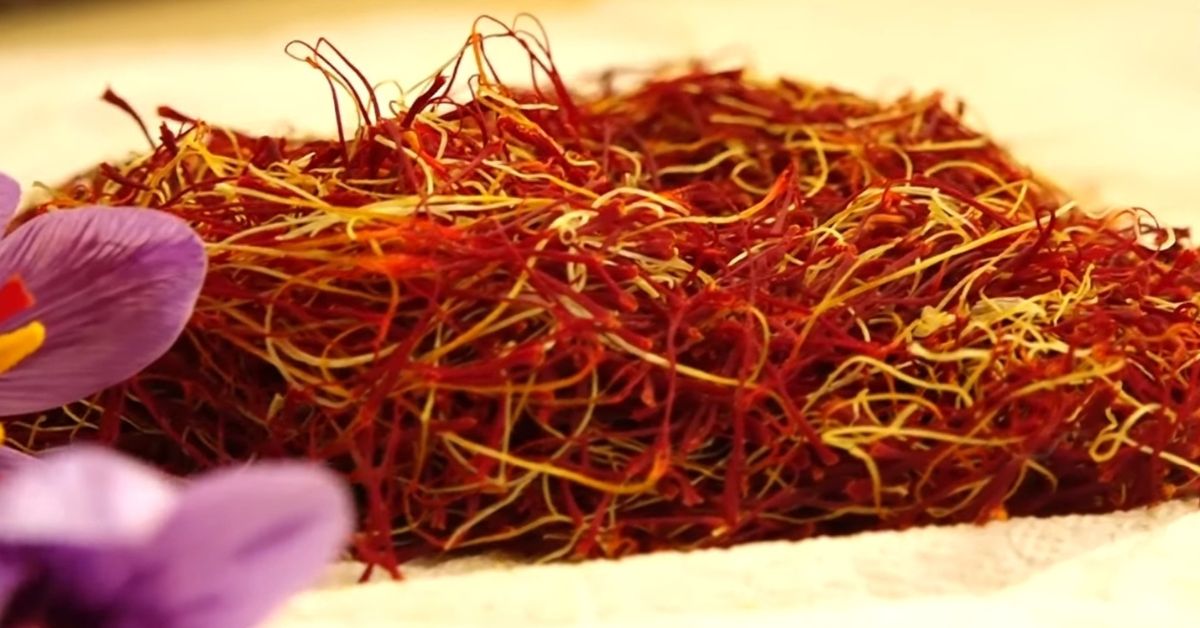
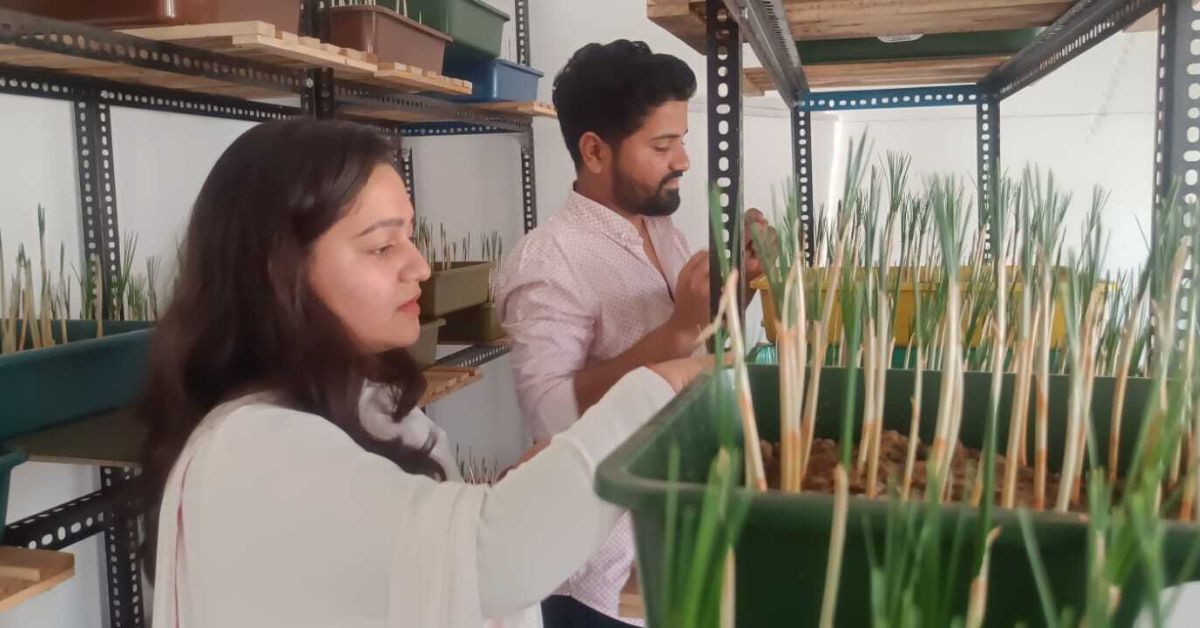
Steps to growing a pricey spice
Step 1: Setup your space
Once the order was placed, the couple busied themselves with preparing a 10 x 10 ft room in their home for the seeds to flower. But while home growers take care of this, they often overlook the next obvious step, says Vaibhav. “Even I made this mistake,” he adds, “I completely forgot to set up a space where I could put the seeds once I had harvested the first batch of flowers.”
Since the seeds require to be placed in the soil after the flowers have been plucked, he advises setting up an area where you can ensure this.
Step 2: Check the seeds
A long journey from Kashmir to Gujarat is tiring for the seeds. Dormant during travel, they tend to attract moisture, which gets collected in their outer layers. “Once the seeds arrive, you need to ensure they are well aerated to get rid of the moisture or fungus will set in,” cautions Vaibhav.
Sorting out the seeds is an ordeal. They need to be checked by hand and smelled to catch any rot that has set in. “Even one seed with fungus can affect the whole batch,” he warns.
Step 3: Divide the batch
Sorting through the seeds leaves you with the good ones and the bad. You discard the bad ones and proceed with silvering the good ones. “In this step, the tail-like portion at the top of the seed is cut off,” says Vaibhav.
He adds that these seeds are then divided into two batches. “One batch is put into soil trays and the other in wooden trays on slotted angle racks. Both the setups are kept in a room where the temperature is stringently controlled.”

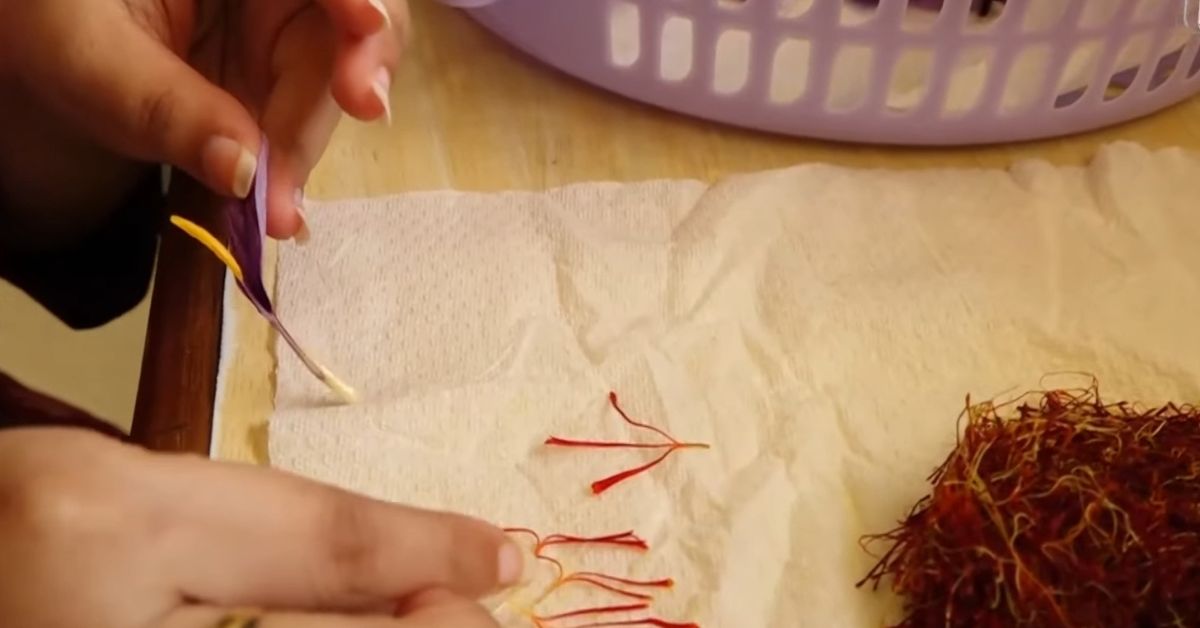
The aim is to mimic the climes of the Valley, as the seeds only flower at a specific temperature. Elaborating on how they managed to achieve this, Vaibhav says “The temperature in the room has to be decreased gradually just as if winter is coming to Kashmir. We’re essentially trying to make the seeds feel at home. So, we start at 25 degrees Celsius and gradually drop the temperature to five degrees through the next four months until harvest.”
Step 4: Pluck the flowers
The purple bloom conveys the harvest is ready. Each flower comprises petals, the stamen and the stigma. “Each of these parts has a different use. The petals are used in the cosmetic industry, the yellow stamen is used in the textile industry for dyeing, and the stigma is the red saffron.”
Step 5: Place the seeds back into the soil
“Once the flowers have been plucked out, all the seeds are placed back into the soil so they can flower again,” says Vaibhav, adding that the cycle that began on 15 August was completed on 1 November 2023.
“Ensure that you water the seeds every 7 to 10 days, and not exceed this,” he informs. Once it’s August, the flowers will be harvested again. “Thus, you see, each bulb has a lifetime of a decade and growing saffron is a one-time investment.”
Why history loves this ‘red gold’
If there is one spice that is history’s favourite, it has to be saffron. Legends tell of how Cleopatra bathed with it and Alexander the Great used it to heal battle wounds. Price is no bar it seems as some traders in Kashmir get a handsome Rs 2 lakh per kg according to an article in The Economic Times.
The article sheds light on how “the world’s most expensive spice” is not every country’s cup of tea. Iran produces 95 percent of the world’s saffron and Kashmir a great margin too. The spice’s demand for a certain climate means not every country is favourable for growth.
The fact that it takes one lakh flowers to produce one kg of saffron (and the entire process must be done by hand) adds to its expense. And farmers in Kashmir have mastered the art.
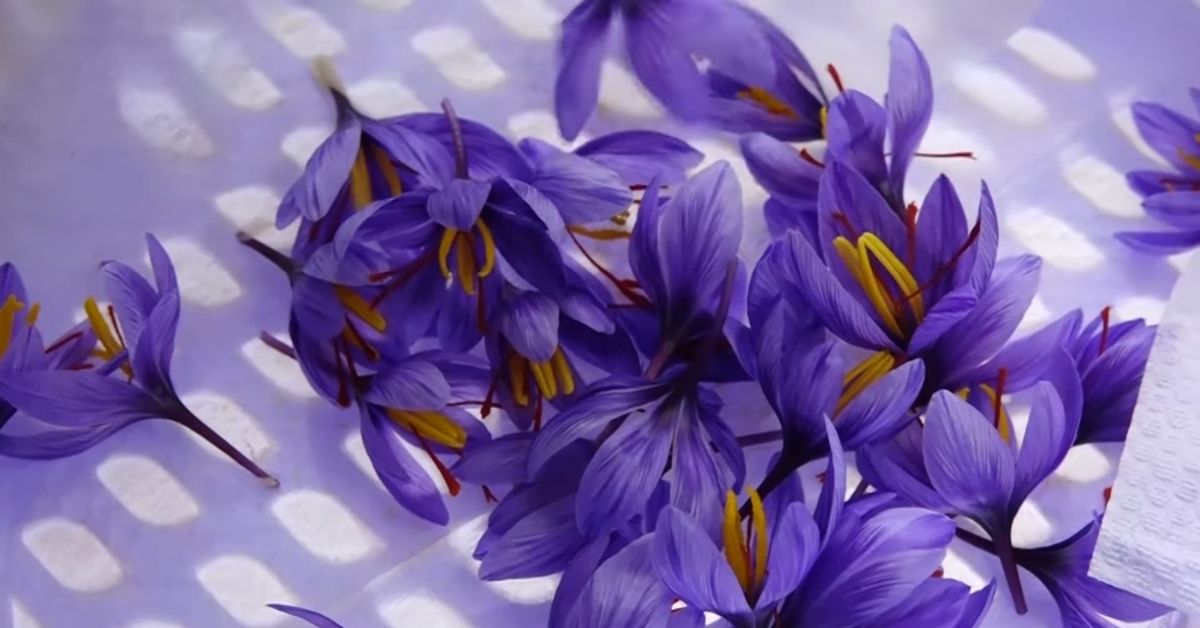
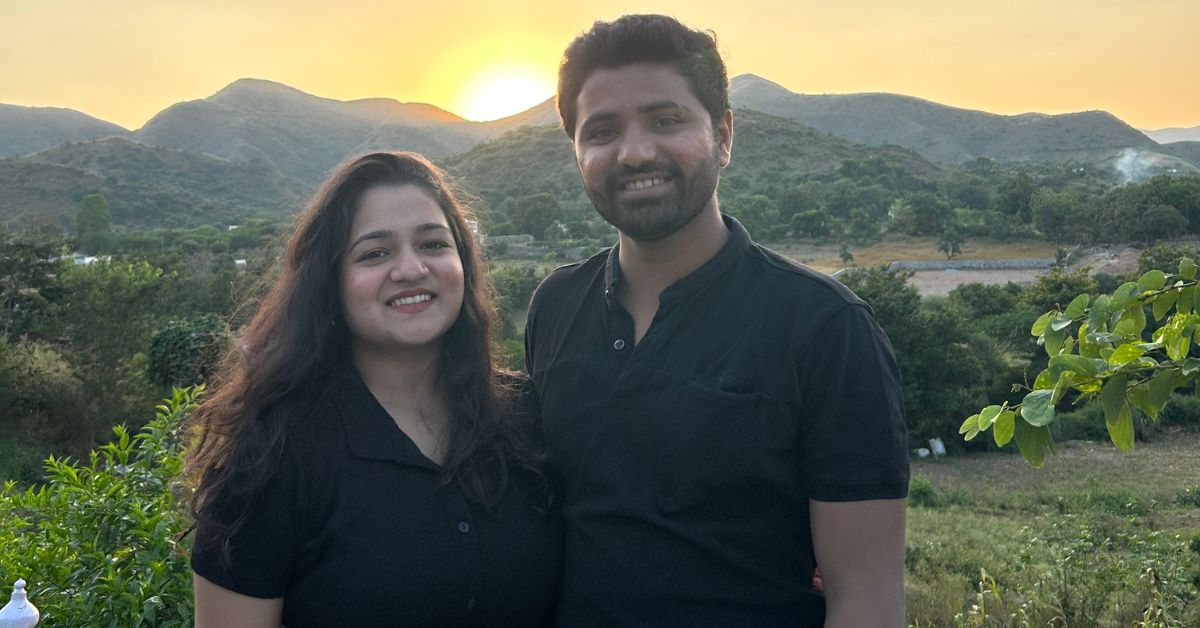
It is said that out of a total of 5,707 hectares of land under saffron cultivation in Kashmir, more than 90 percent is in the Pampore tehsil of Pulwama district in South Kashmir. In 2020, the Valley rejoiced as the GI tag was given to Kashmiri saffron making it illegal for someone outside the valley to make and sell a similar product under the ‘Kashmiri saffron’ name.
The saffron grown in the Valley is of three types — ‘Lachha Saffron’ is the variety where stigmas just separated from the flowers are dried without further processing; ‘Mongra Saffron’ is the variety where stigmas are detached from the flower, dried in the sun, and processed traditionally; and ‘Guchhi Saffron’ which also does not involve the stigmas being processed. Instead, they are dried and joined in a bundle tied with a cloth thread.
The one that the Patels are growing is the second variety.
“Our first harvest was an experiment,” Vaibhav emphasises. But lucrative all the same. Each gram of the red threads fetched the couple Rs 700. As for the road ahead, they are confident they can expand sales implementing the learnings of the previous harvest.
Edited by Pranita Bhat
No comments:
Post a Comment